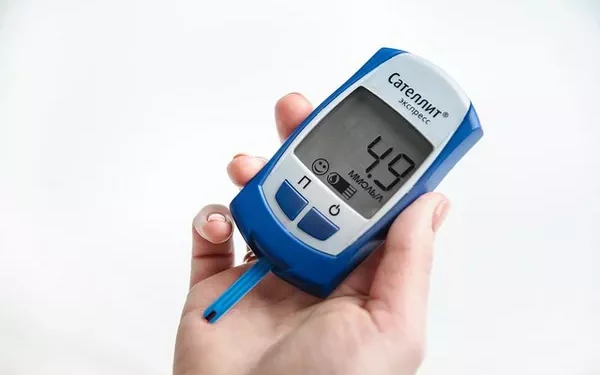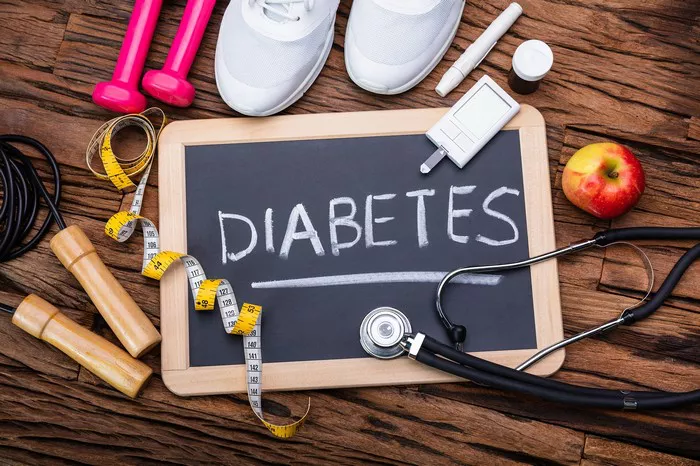Hypoglycemia, commonly referred to as low blood sugar, is a condition that occurs when blood glucose levels drop below the normal range. It is a significant concern for individuals with diabetes, especially those who use insulin or other glucose-lowering medications. However, hypoglycemia can also occur in people without diabetes, under certain circumstances. Understanding the different types of hypoglycemia, their causes, symptoms, and management is crucial for effective treatment and prevention.
In this article, we will explore the various types of hypoglycemia, including their underlying mechanisms, risk factors, and strategies for management.
Understanding Hypoglycemia
Hypoglycemia is defined as a blood glucose level of less than 70 mg/dL (3.9 mmol/L). The severity of hypoglycemia can vary, ranging from mild cases, where symptoms can be easily managed, to severe cases that require immediate medical intervention. The brain depends on glucose as its primary energy source, so a drop in glucose levels can lead to neurological symptoms and, in extreme cases, life-threatening situations.
Symptoms of Hypoglycemia
The symptoms of hypoglycemia can be categorized into two main groups: adrenergic (related to the activation of the sympathetic nervous system) and neuroglycopenic (related to insufficient glucose supply to the brain).
Adrenergic Symptoms:
- Shakiness or trembling
- Palpitations or rapid heartbeat
- Sweating
- Anxiety or nervousness
- Hunger
- Irritability
Neuroglycopenic Symptoms:
- Confusion or difficulty concentrating
- Dizziness or lightheadedness
- Weakness or fatigue
- Headache
- Blurred vision
- Seizures
- Loss of consciousness
Types of Hypoglycemia
Hypoglycemia can be classified into several types based on the underlying causes and the context in which it occurs. The primary types include:
1. Reactive Hypoglycemia
Reactive hypoglycemia, also known as postprandial hypoglycemia, occurs within a few hours after eating a meal. This type of hypoglycemia is typically seen in individuals without diabetes, though it can also occur in people with diabetes.
Causes and Mechanisms
The exact cause of reactive hypoglycemia is not always clear, but it is thought to result from an exaggerated insulin response following a meal. When a person consumes carbohydrates, the body releases insulin to help transport glucose into the cells. In some cases, the insulin response is too strong, leading to a rapid drop in blood glucose levels after the initial spike.
Several factors can contribute to reactive hypoglycemia:
High-Carbohydrate Meals: Consuming meals high in refined carbohydrates or sugars can lead to a rapid increase in blood glucose, followed by a sharp decline.
Sensitivity to Insulin: Some individuals may have an increased sensitivity to insulin, causing glucose levels to drop more quickly.
Early Diabetes: Reactive hypoglycemia can sometimes be an early sign of type 2 diabetes, where the body’s regulation of glucose is beginning to malfunction.
Symptoms and Diagnosis
The symptoms of reactive hypoglycemia typically occur within 2 to 4 hours after eating and may include shakiness, sweating, hunger, and weakness. Diagnosis often involves documenting the timing of symptoms in relation to meals, blood glucose monitoring, and possibly an oral glucose tolerance test (OGTT).
Management
Management of reactive hypoglycemia focuses on dietary modifications:
Frequent Small Meals: Eating smaller, more frequent meals that include a balance of carbohydrates, protein, and fat can help stabilize blood glucose levels.
Low-Glycemic Index Foods: Choosing foods with a low glycemic index (GI) can prevent rapid spikes and subsequent drops in blood glucose.
Avoiding Sugary Foods: Limiting the intake of refined sugars and simple carbohydrates can reduce the risk of postprandial hypoglycemia.
2. Fasting Hypoglycemia
Fasting hypoglycemia occurs when blood glucose levels drop after a period of not eating, typically more than 8 hours. This type of hypoglycemia is more commonly associated with underlying medical conditions or medication use.
Causes and Mechanisms
Fasting hypoglycemia can result from several conditions:
Insulinoma: A rare tumor of the pancreas that produces excess insulin, leading to low blood glucose levels.
Endocrine Disorders: Conditions such as Addison’s disease or growth hormone deficiency can impair glucose regulation and lead to hypoglycemia.
Liver Disease: The liver plays a crucial role in maintaining blood glucose levels by releasing stored glucose. Liver diseases such as cirrhosis can impair this function, leading to fasting hypoglycemia.
Medications: Certain medications, including insulin and sulfonylureas (used in diabetes treatment), can cause hypoglycemia, especially if taken without food.
Symptoms and Diagnosis
Fasting hypoglycemia often presents with symptoms such as dizziness, confusion, weakness, and even loss of consciousness, particularly after prolonged periods without food. Diagnosis involves measuring blood glucose levels during fasting and conducting further tests to identify underlying causes.
Management
The management of fasting hypoglycemia depends on the underlying cause:
Treating Underlying Conditions: Addressing the root cause, such as removing an insulinoma or managing liver disease, is crucial.
Medication Adjustments: For individuals with diabetes, adjusting medication dosages or timing can help prevent fasting hypoglycemia.
Frequent Eating: Eating small, frequent meals and avoiding prolonged fasting can help stabilize blood glucose levels.
3. Drug-Induced Hypoglycemia
Drug-induced hypoglycemia is a common concern for individuals with diabetes, particularly those using insulin or other glucose-lowering medications. However, certain non-diabetic medications can also cause hypoglycemia as a side effect.
Causes and Mechanisms
Medications that can cause hypoglycemia include:
Insulin and Insulin Secretagogues: Medications such as insulin, sulfonylureas, and meglitinides stimulate insulin production or action, increasing the risk of hypoglycemia, especially if the dose is too high or not balanced with food intake.
Beta-Blockers: Used to treat high blood pressure and heart conditions, beta-blockers can mask the symptoms of hypoglycemia, making it harder to recognize and manage.
Quinine: An antimalarial drug that can cause hypoglycemia by increasing insulin release.
ACE Inhibitors and ARBs: These blood pressure medications can increase insulin sensitivity and lower blood glucose levels.
Symptoms and Diagnosis
Symptoms of drug-induced hypoglycemia are similar to those of other types and may include sweating, tremors, confusion, and in severe cases, seizures or coma. Diagnosis involves reviewing the patient’s medication history, monitoring blood glucose levels, and assessing the timing of symptoms in relation to medication use.
Management
Managing drug-induced hypoglycemia involves:
Medication Review: Adjusting the dosage, timing, or type of medication can help reduce the risk of hypoglycemia.
Patient Education: Educating patients on recognizing the signs of hypoglycemia and how to adjust their food intake or medication accordingly.
Frequent Monitoring: Regular blood glucose monitoring is essential for individuals on glucose-lowering medications to detect and prevent hypoglycemia.
4. Nocturnal Hypoglycemia
Nocturnal hypoglycemia occurs during the night while a person is asleep. This type of hypoglycemia is particularly dangerous because it can go unnoticed for several hours, leading to severe symptoms.
Causes and Mechanisms
Nocturnal hypoglycemia is often related to:
Excessive Insulin Doses: Taking too much insulin before bedtime can lower blood glucose levels overnight.
Lack of Evening Snack: Skipping a bedtime snack, especially after taking insulin or other glucose-lowering medications, can result in low blood glucose during the night.
Exercise: Physical activity, particularly in the late afternoon or evening, can increase insulin sensitivity and lead to hypoglycemia overnight.
Symptoms and Diagnosis
Nocturnal hypoglycemia may cause symptoms such as night sweats, nightmares, and waking up feeling tired or with a headache. Some individuals may experience symptoms during sleep and not fully wake up, making it harder to recognize the condition. Continuous glucose monitoring (CGM) can help detect nighttime hypoglycemia by providing data on blood glucose levels throughout the night.
Management
Managing nocturnal hypoglycemia involves:
Adjusting Evening Insulin: Modifying the dosage or timing of insulin before bed to prevent overnight lows.
Bedtime Snack: Eating a small snack before bed that includes carbohydrates and protein can help maintain stable glucose levels overnight.
Monitoring: Using a CGM or setting an alarm to check blood glucose levels during the night can help identify and address nocturnal hypoglycemia.
5. Exercise-Induced Hypoglycemia
Exercise-induced hypoglycemia occurs during or after physical activity, particularly in individuals with diabetes who are on insulin or other glucose-lowering medications.
Causes and Mechanisms
Exercise increases glucose uptake by muscles, which can lower blood glucose levels, particularly if the exercise is intense or prolonged. Individuals with diabetes may also experience delayed hypoglycemia several hours after exercise due to ongoing glucose uptake by muscles.
Symptoms and Diagnosis
Symptoms of exercise-induced hypoglycemia can include shakiness, sweating, dizziness, and fatigue. In severe cases, confusion or loss of consciousness may occur. Monitoring blood glucose levels before, during, and after exercise can help diagnose and manage this type of hypoglycemia.
Management
Managing exercise-induced hypoglycemia involves:
Pre-Exercise Preparation: Checking blood glucose levels before exercise and adjusting carbohydrate intake or insulin doses accordingly.
During Exercise: Consuming carbohydrates during prolonged or intense exercise to maintain stable glucose levels.
Post-Exercise Monitoring: Continuing to monitor blood glucose levels for several hours after exercise to detect delayed hypoglycemia.
6. Alcohol-Induced Hypoglycemia
Alcohol-induced hypoglycemia can occur in individuals with or without diabetes, particularly after consuming large amounts of alcohol, especially on an empty stomach.
Causes and Mechanisms
Alcohol can interfere with the liver’s ability to release glucose into the bloodstream, leading to low blood glucose levels. This effect is more pronounced in individuals who consume alcohol without eating, as food intake typically helps maintain blood glucose levels.
Symptoms and Diagnosis
Symptoms of alcohol-induced hypoglycemia may include confusion, dizziness, sweating, and in severe cases, seizures or loss of consciousness. Diagnosis involves considering the timing of symptoms in relation to alcohol consumption and monitoring blood glucose levels.
Management
Managing alcohol-induced hypoglycemia involves:
Limiting Alcohol Intake: Reducing or avoiding alcohol consumption, particularly in large amounts or on an empty stomach.
Eating with Alcohol: Consuming food, particularly carbohydrates, when drinking alcohol can help prevent hypoglycemia.
Monitoring: For individuals with diabetes, checking blood glucose levels before and after drinking alcohol can help detect and prevent hypoglycemia.
See also: What Autoimmune Disease Causes Hypoglycemia
Conclusion
Hypoglycemia is a complex condition with various types, each with its own causes, symptoms, and management strategies. Understanding these different types is crucial for individuals at risk, particularly those with diabetes, to effectively prevent and manage hypoglycemia. By recognizing the symptoms early and implementing appropriate lifestyle and medication adjustments, individuals can reduce the risk of severe hypoglycemic episodes and maintain better overall health.
Education and awareness are key to managing hypoglycemia. Whether it’s adjusting meal plans, modifying medication, or monitoring blood glucose levels more frequently, taking proactive steps can significantly improve outcomes and quality of life for those affected by hypoglycemia.
Related topics:
Can Fasting Cause Hypoglycemia?
























